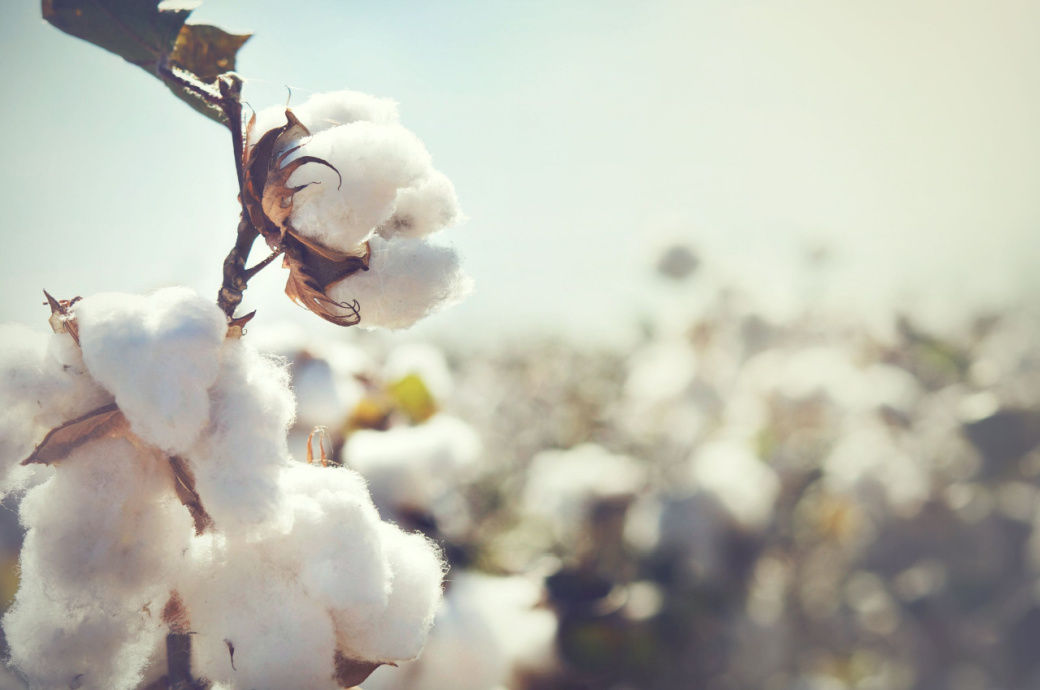Australian cotton industry to divert textile waste from landfill

Inspired by the environmental benefits of diverting 800,000 tonnes of textile from landfill each year, Goondiwindi’s Sam Coulton, who hosted the phase 1 trial, is being joined by Gunnedah’s Scott Morgan, who is a leading cotton farmer in sustainability. Morgan said his decision to take part in the trial was easy given his early adoption of a large-scale solar generation and numerous water conservation projects.
“I’m excited about returning 100 per cent cotton back to farms because I think it’s the right thing to do for the environment by helping close the circularity gap. My strong hope is that the cotton waste can improve soil health and organisms – thereby improving crop yields,” added Morgan.
Flooding delayed spreading but in late December, Morgan was able to distribute around 2.4 tonnes of the shredded material onto an already planted cotton field, thanks to project partner Thread Together - a charitable organisation that adopts an ethical response to the issue of fashion excess. Overhead irrigation then watered the material into the soil and the resulting crop is looking good, standing at about 50 cm and scheduled for harvest in late May.
Poor weather, heavy flooding and logistics issues also impacted Sam Coulton, in Goondiwindi, who managed to apply 600 kilograms of cotton waste onto one plot on his farm, less than hoped for but significant in his second year of circularity trails. Since application Coulton has furrow cultivated and irrigated and the material has broken down significantly.
“The first phase was positive, but with COVID and poor weather we were limited in what we could achieve. I am hopeful this phase will lead to a major transformation in cotton circularity,” Coulton said.
Soil scientist Dr Oliver Knox, who oversaw phase 1 and is overseeing phase 2, has found that cotton textile waste has no adverse impact to soil health or cotton yields. “This work is very important in helping to resolve the issues caused by Australians throwing away 23 kilos of textile waste per person each year.”
Knox said new test results from Phase 1 were very encouraging. “We found that organic carbon in the top 10cm of soil from phase 1, has increased to 1.08 per cent from .77 per cent and that is a significant jump. Sulphur has also increased from 4.5mg per kg to 7.4mg per kg and that indicates improved soil fertility and health.”
For the 2022-23 trial, programme partners Cotton Australia, Goondiwindi Cotton, the Cotton Research and Development Corporation (CRDC) and Sheridan have been joined by Thread Together, the organisations said in a joint press release.
Thread Together CEO Anthony Chesler said rather than cotton waste, they are dealing with excess stock. “Thread Together never declines a donation of excess clothing and sometimes this creates more supply than demand. As part of this new challenge, we were pleased to work with Worn Up to ensure 100 per cent cotton garments were shredded and dispatched to Gunnedah.”
Tanya Deans, president of Hanes Australasia, said after the success of the Goondiwindi trial, Sheridan is delighted to be involved in phase 2. “Progress towards circularity is an important part of our sustainability journey and Sheridan, together with the wider Hanes business, is committed to supporting this effort in the provision of cotton waste offcuts. I’d also like to thank the CRDC and Thread Together for supporting this mission with their generous contribution as well. This is just the beginning of innovative solutions on our shores and we are proud to be a part of it.”
As well as providing funding for Knox to continue his leading research and development in this area, CRDC has committed almost $2,000,000 in funds over the next 3 years to a new suite of projects to complement this initial work, aimed at increasing our understanding of the science of textile waste breakdown and its effects on soils health, as well as the logistics and business challenges of processing and transporting textile waste back to cotton farms.
Executive director Dr Ian Taylor said they are proud to invest in such a worthwhile endeavour. “This programme could be a game-changer, but we need scientific rigour to fully appreciate the soil science and the long-term impact of returning cotton textiles to the farm: carbon footprint, impact on soil health, waterways, benefits to farmers, brands, and other stakeholders.”
One of these new projects already underway is a three-year investment with the University of Newcastle to further investigate the effects of dyes and finishes from waste material on soil health, especially on the diversity, growth and functioning of soil microbes which are critical for the health and resilience of soils across the landscape. This project will also look at ways to pelletise cotton textiles through biological breakdown of the waste material to enable spreading on fields using existing farm machinery.
Leading the Goondiwindi and Gunnedah circularity project is Cotton Australia’s Brooke Summers, who works closely with all brands and their consumers who are invested in textile circularity and its sustainability credentials, through the Cotton to Market programme.
“The results from phase 1 show it’s possible to find a scalable solution to cotton textile waste right here in Australia. Our farmers want it and they are passionate about returning cotton waste to their farms to become part of the next crop, closing the loop on circularity. Cotton consumers want it too and they are demanding environmental solutions as part of their purchasing decisions. Phase 2 should bring us a step closer, but we need the committed involvement of governments, industry groups, brands and potential investors,” explained Summers.
Phase 2 will be monitored closely by Dr Knox at both locations with all results being scientifically assessed before a full report is produced to guide future circularity developments.
”After the success of the Goondiwindi trial, we’re excited to be involved in phase two of this trial. Progress towards circularity is an important part of our sustainability journey and Sheridan, together with the wider Hanes business has again supported the Goondiwindi site, providing cotton waste offcuts for the project. I’d also like to thank the Cotton Research and Development Corporation and Thread Together for supporting this mission with their generous contribution as well. This is just the beginning of innovative solutions on our shores and we are proud to be a part of it,” Deans added.
“Whilst Thread Together’s primary purpose is to partner with the fashion industry to divert brand new clothing apparel, footwear and accessories from landfill and provide these to people in need, in some circumstances, the amount of new clothing for some product lines far exceeds the current demand for these items. In such situations, we task ourselves to manage these items in line with the waste hierarchy by thinking, global and acting locally, and the fibre composition dictates the pathway. We are very excited to be participating in the 2nd phase of Returning Cotton Waste to Cotton Fields in Gunnedah with the prospect of a scalable solution for managing natural fibres in Australia by returning these items to the ground to regenerate the soil on cotton fields,” Chesler explained.
“The lack of effect on the crops last season was exciting, because it provided evidence that we can divert this material from landfill, where it has the potential to generate methane, and instead apply it to a productive system where it has the potential to feed the soil without a detrimental effect on a valuable crop,” said Knox.
“Another exciting observation was where we applied the shredded cotton and compost at 50 tonnes/ha to an area of stock route. In these soils we saw an increase in soil organic carbon and also sulphur. The potential to improve these soils, which are still relied on for cattle movement and feeding in times of drought, suggests further opportunities as well as insight into what we might achieve over time under the cropping areas of the farm,” he added.
Fibre2Fashion News Desk (RR)
































-Ltd..jpg?tr=w-120,h-60,c-at_max,cm-pad_resize,bg-ffffff)





.jpg?tr=w-120,h-60,c-at_max,cm-pad_resize,bg-ffffff)
.jpg?tr=w-120,h-60,c-at_max,cm-pad_resize,bg-ffffff)






